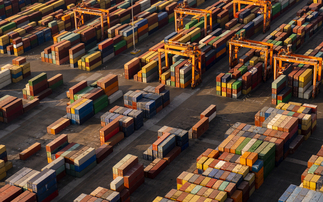Allan Zhang outlines the highlights of the latest bilateral talks between the world's biggest superpowers
With less than 100 days to a global deal on climate change, and on the eve of the UN Summit on Sustainable Development, Chinese president Xi Jinping paid an official visit to the United States.
All eyes were on the US and China, the world's two largest economies and also the two largest carbon emitters, to see what messages they might release to the international community at an important point in the negotiations ahead of the UN climate summit in Paris in December.
It is reassuring to note that the summit has come up with some very positive outcomes. Together with US President Barack Obama, the two leaders issued a Joint Statement on Climate Change on 25 September 2015. They also made new pledges and reached agreement on a wide range of issues, including the Sustainable Development Goals (SDGs), which were adopted by all 193 member states of the UN on 27 September with an agenda consisting of 17 goals designed to end poverty and hunger by 2030.
Highlights of China-US deal:
• China will launch a national emissions trading system in 2017, covering key industry sectors such as power generation, iron and steel, chemicals, building materials including cement, paper-making and non-ferrous metals.
• The United States reaffirms its $3bn pledge to the Green Climate Fund (GCF) and China announced that it will contribute ¥20bn (US$3bn) for setting up a China South-South Climate Cooperation Fund.
• Both countries have agreed to advance sustainable and inclusive international development as laid out in the new 2030 Agenda for Sustainable Development, through expanded cooperation to end poverty and hunger and the promotion of inclusive economic growth and protection of the environment.
In his first address to the United Nations in New York, President Xi Jinping announced that China would set up a development fund with an initial pledge of US$2bn to help developing countries realise a wide-ranging, "post-2015" global sustainable development agenda. He also promised to increase investment in the least-developed countries, increasing its total to US$12bn by 2030.
The official announcement of China's "cap and trade" market gives a clear signal that China takes the carbon pricing issue seriously and wants to leverage its Clean Development Mechanism experience to build the world's largest carbon market, outstripping the value of the EU-dominated global carbon market of €44.7bn in 2014. It is, however, still too early to tell when the market will be fully functional (some say it may well extend into 2019). It remains a challenge for the central government to come up with a well-designed and clearly-defined mechanism that would work effectively to cope with the needs of all provinces while not denting economic growth. Further, there are two key issues to be addressed: how to smoothly absorb the existing carbon trading systems and credits of the seven pilot regions into the national system, and how to open the door wider for international participation. Limited access for foreign players in the pilot markets has attracted widespread criticism.
On the growth prospect, China is planning to invest US$6.6tr in the coming decade on low carbon technology, renewables, energy efficiency and emission reduction products, generating huge business opportunities for Chinese and foreign companies along the way. According to PwC's soon to be released 2015 Low Carbon Economy Index (LCEI), the scale of investment to meet China's wind and solar targets alone are likely to add up to around $230bn (or two per cent of one year's GDP).
Looking at the list of the China-US deal, the power sector is understandably the focus of attention. China will implement a new "green dispatch" system, which will prioritise power generation from renewable sources and establish guidelines to accept electricity first from the most efficient and lowest-polluting fossil fuel generators. Meanwhile, the US will reduce emissions in its power sector by 32 per cent by 2030, and finalise a federal plan to implement carbon emission standards for power plants in states that choose not to design their own implementation plans in 2016 in accordance with its Clean Power Plan. Both sides would step up their work to phase down super-polluting hydrofluorocarbons (HFCs) while strengthening nuclear energy cooperation.
Transport is another sector for common actions. China has committed to promote the share of public transport in motorised travel, reaching 30 per cent in big and medium-sized cities by 2020. Both countries have agreed to include green aviation, green ports and vessels into their cooperation mechanism. They also committed to develop new heavy-duty vehicle fuel efficiency standards, to be finalised in 2016 and implemented in 2019. Further, China has committed to step up efforts for low-carbon buildings, with the share of green buildings reaching 50 per cent in newly built buildings in cities and towns by 2020.
Green financing has been a major barrier for developing countries to fully take part in global climate actions. China's new financial commitments are over 100 times more that the US$20m pledged at the Lima Conference last year. With this increased budget, China could do more to help developing countries enhance their capabilities and expand their scope of cooperation to include planning, R&D, pilot programmes and system set-up and maintenance. It also aims to help developing countries to improve their access to the GCF and make full use of the GCF fund. Hopefully China's action will encourage developed countries to step up their efforts for securing funding for the GCF.
Recognising the significant role of green financing to sustainable development, China and the US have agreed to further their green finance and cooperation. It is especially encouraging to note that following US commitment in 2013 to end public financing for new conventional coal-fired power plants, except in the poorest countries, China agreed to strictly control public investment flowing into projects with high pollution and carbon emissions at home and abroad. This will significantly change the landscape of China's future investment activities, including those through the newly formed Asia Infrastructure Investment Bank (AIIB).
Business implications of the US-China initiatives
China-US commitments on climate change reflect a strong and growing trend - businesses around the world are taking action. Three quarter of CEOs are developing new products and services to respond to climate change, motived by improving shareholder value (53 per cent) and building trust in their organisations (52 per cent), as PwC's most recent Global CEO Survey on Climate Change suggests. The new China-US initiatives will help pave a smoother way to the UN climate change conference in Paris in December and raise business's level of confidence in carbon mitigation and adaptation actions.
China-US cooperation programmes cover green finance, low-carbon technology, agriculture, transportation, green trade, food security, standards and measurement and green city development. The two countries are likely to push for wider international actions in these priority areas. Companies operating in these sectors will need to consider adjusting their business strategies accordingly to reap the full benefits brought by the new initiatives; they will also need to understand how this climate policy shift by the world's two largest emitters could leave some assets and indeed industries stranded over time.
This new level of climate ambition also sits against the backdrop of the new UN SDGs, with commitments for action on sustainable development that go beyond climate change. With the adoption of the SDGs, companies will need to develop their strategies to cope with this renewed government ambition. A recent PwC survey suggests that 90 per cent of citizens expect businesses to sign up to the SDGs and 50 per cent expect businesses to embed them into their strategies. CEOs therefore will need to know how their businesses support or detract from the SDGs, especially if they want to be on the receiving end of 'fair' regulation.
Allan Zhang is a senior economist and director of PwC UK's Sustainability and Climate Change team.
This article is part of BusinessGreen's Road to Paris hub, hosted in association with PwC







